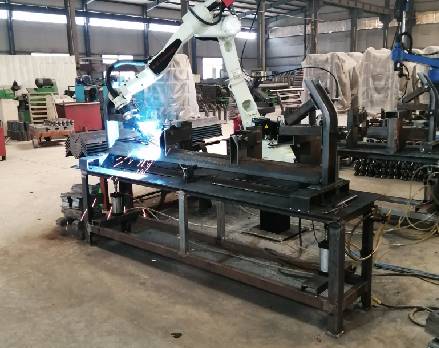 Afrikaans
Afrikaans  Albanian
Albanian  Amharic
Amharic  Arabic
Arabic  Armenian
Armenian  Azerbaijani
Azerbaijani  Basque
Basque  Belarusian
Belarusian  Bengali
Bengali  Bosnian
Bosnian  Bulgarian
Bulgarian  Catalan
Catalan  Cebuano
Cebuano  Corsican
Corsican  Croatian
Croatian  Czech
Czech  Danish
Danish  Dutch
Dutch  English
English  Esperanto
Esperanto  Estonian
Estonian  Finnish
Finnish  French
French  Frisian
Frisian  Galician
Galician  Georgian
Georgian  German
German  Greek
Greek  Gujarati
Gujarati  Haitian Creole
Haitian Creole  hausa
hausa  hawaiian
hawaiian  Hebrew
Hebrew  Hindi
Hindi  Miao
Miao  Hungarian
Hungarian  Icelandic
Icelandic  igbo
igbo  Indonesian
Indonesian  irish
irish  Italian
Italian  Japanese
Japanese  Javanese
Javanese  Kannada
Kannada  kazakh
kazakh  Khmer
Khmer  Rwandese
Rwandese  Korean
Korean  Kurdish
Kurdish  Kyrgyz
Kyrgyz  Lao
Lao  Latin
Latin  Latvian
Latvian  Lithuanian
Lithuanian  Luxembourgish
Luxembourgish  Macedonian
Macedonian  Malgashi
Malgashi  Malay
Malay  Malayalam
Malayalam  Maltese
Maltese  Maori
Maori  Marathi
Marathi  Mongolian
Mongolian  Myanmar
Myanmar  Nepali
Nepali  Norwegian
Norwegian  Norwegian
Norwegian  Occitan
Occitan  Pashto
Pashto  Persian
Persian  Polish
Polish  Portuguese
Portuguese  Punjabi
Punjabi  Romanian
Romanian  Russian
Russian  Samoan
Samoan  Scottish Gaelic
Scottish Gaelic  Serbian
Serbian  Sesotho
Sesotho  Shona
Shona  Sindhi
Sindhi  Sinhala
Sinhala  Slovak
Slovak  Slovenian
Slovenian  Somali
Somali  Spanish
Spanish  Sundanese
Sundanese  Swahili
Swahili  Swedish
Swedish  Tagalog
Tagalog  Tajik
Tajik  Tamil
Tamil  Tatar
Tatar  Telugu
Telugu  Thai
Thai  Turkish
Turkish  Turkmen
Turkmen  Ukrainian
Ukrainian  Urdu
Urdu  Uighur
Uighur  Uzbek
Uzbek  Vietnamese
Vietnamese  Welsh
Welsh  Bantu
Bantu  Yiddish
Yiddish  Yoruba
Yoruba  Zulu
Zulu conveyor frame parts
Understanding Conveyor Frame Parts A Key to Efficient Material Handling
In the realm of industrial operations, conveyor systems play a critical role in the transportation of materials. At the heart of these systems lies the conveyor frame — a structure that supports and maintains the integrity of the entire conveyor assembly. Understanding the various parts of a conveyor frame is essential for optimizing performance, ensuring longevity, and enhancing safety in material handling processes.
What is a Conveyor Frame?
A conveyor frame is essentially the backbone of a conveyor system. It provides the necessary support for other components such as belts, rollers, motors, and drives. The durability and design of the frame significantly affect the overall effectiveness of the conveyor, influencing both operational efficiency and maintenance requirements.
Key Components of Conveyor Frame Parts
1. Base Structure The foundational support of the conveyor frame often consists of robust materials such as steel or aluminum. This base is designed to withstand heavy loads and resist wear and tear from continuous use. The choice of material affects not only the durability but also the flexibility of the system to adapt to various operational environments.
2. Side Rails Side rails are crucial for containing the movement of materials along the conveyor. They guide the belt or roller system and prevent any unplanned detachment of transported items. The design of side rails can vary, with some featuring additional strategic grooving or angled profiles to enhance their functionality.
3. Crossmembers These horizontal components connect the side rails, providing additional support and stability to the conveyor frame. Crossmembers can be reinforced to handle heavier loads. The arrangement and spacing of crossmembers are critical, as they contribute to the overall structural integrity of the conveyor.
4. Mounting Brackets These parts facilitate the attachment of various components like motors, drives, and idlers. Properly designed mounting brackets ensure that these elements are securely fastened, minimizing vibrations and enhancing the overall functioning of the conveyor system.
5. Legs and Feet Legs elevate the conveyor and offer stability. Adjustable feet can be vital for leveling the conveyor on uneven surfaces, ensuring smooth operation and reducing wear on components. A proper leg design is essential for maintaining the best ergonomics in relation to the workflow.
conveyor frame parts

6. Bearings and Supports Bearings are crucial for smooth movement in conveyor systems. They reduce friction between moving parts and contribute to the longevity of the operation. Properly supported bearings enhance the operational efficiency of the conveyor, minimizing downtime due to component failure.
7. Drive Assemblies The drive assembly is responsible for the motion of the conveyor. It includes various components such as motors, pulleys, and gearboxes. An efficient drive assembly is essential for maintaining the desired speed and load capacity of the conveyor system.
Importance of Conveyor Frame Parts
The importance of understanding conveyor frame parts cannot be overstated. Each component's design and integration affect the conveyor's efficiency, longevity, and overall performance. A well-constructed conveyor frame not only provides support but also helps in maximizing productivity by ensuring materials are transported smoothly and safely.
1. Safety A robust conveyor frame minimizes the risk of accidents. Proper containment and support of loads are essential in preventing spills, slips, and falls, contributing to a safer working environment.
2. Maintenance Understanding the various parts of a conveyor frame allows for more effective maintenance schedules. Regular inspections can identify wear and weaknesses, enabling timely repairs and replacements that reduce unexpected downtimes.
3. Customizability Knowledge of frame parts allows businesses to customize their conveyor systems according to their specific needs. Custom designs can enhance space efficiency, load handling capabilities, and overall workflow dynamics.
4. Efficiency An optimized conveyor frame can significantly enhance operational efficiency. By ensuring proper alignment and minimal resistance, businesses can reduce energy costs and improve throughput.
Conclusion
In conclusion, conveyor frame parts play a pivotal role in the effective functioning of conveyor systems across various industries. By understanding these components, organizations can ensure their material handling operations are efficient, safe, and cost-effective. As industries continue to evolve, the importance of durable and well-designed conveyor frames will only increase, making knowledge of their parts essential for anyone involved in industrial operations.
-
Revolutionizing Conveyor Reliability with Advanced Rubber Lagging PulleysNewsJul.22,2025
-
Powering Precision and Durability with Expert Manufacturers of Conveyor ComponentsNewsJul.22,2025
-
Optimizing Conveyor Systems with Advanced Conveyor AccessoriesNewsJul.22,2025
-
Maximize Conveyor Efficiency with Quality Conveyor Idler PulleysNewsJul.22,2025
-
Future-Proof Your Conveyor System with High-Performance Polyurethane RollerNewsJul.22,2025
-
Driving Efficiency Forward with Quality Idlers and RollersNewsJul.22,2025





























